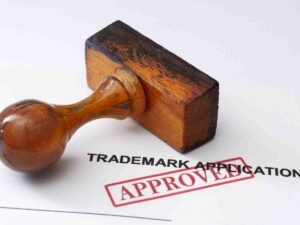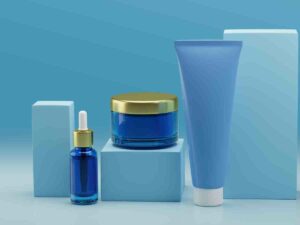Skincare is an ever-growing industry, and starting your own skincare line can be a rewarding event in your life.
With more people becoming conscious of the importance of skincare, getting more interested to buy and try it, and the impact they witness of the products they use on their bodies and the environment, there has never been a better time to create your own skincare line. However, launching a skincare line has a really long process, especially if you are new to the beauty industry. It will take a lot of time for you to understand every bit about this field.
In this article, we will provide you with the 10 step-by-step guide on how to start a skincare line, from developing your brand to manufacturing and marketing your products. Whether you are a skincare enthusiast, a cosmetic chemist, or an entrepreneur, this article will give you the tools and whole knowledge you need to turn your skincare line dream into a reality.
Let’s all hop in together and read this full guide.
1. Legal and Regulatory Requirements
When starting a skincare line, it is essential to understand and comply with the legal and regulatory requirements in your country or region. Partnering with a reputable skin care contract manufacturer can be a strategic move, as they often have a deep understanding of these legalities and can help ensure your products meet all regulatory standards. If you fail to comply with all of these, it can result in significant fines, legal action, and even in the most painful situation, the closure of your business. So, here are some common legal and regulatory requirements to consider when starting a skincare line:
Product Testing and Safety Standards
Depending on your location, there may be specific safety and testing requirements for skincare products. For example, in the United States of America, the Food and Drug Administration (FDA) requires cosmetic products to be safe for their intended use and properly labeled.
It is essential to work with a reputable laboratory to ensure your products are safe and meet regulatory requirements. Once you have failed to do so, you should maybe implement some changes in certain areas.

Ingredient Restrictions and Labeling
Each countries have their own standards and specific regulations regarding the use of ingredients in skincare products, including restrictions on certain chemicals and additives. It is important to understand these regulations and comply with them. Proper labeling is also critical to ensure consumers know what ingredients are in your products and how to use them safely.

Business Registration and Permits
On starting a skincare line, you may need to register your business and obtain permits to operate legally, depending on where you are located. These requirements can vary by city, state/province, and country, so you need to manually research what is required in your specific location.

Trademarks and Copyrights
Ofcourse, protecting your brand is part of starting a skincare line. Trademark registration is a must to avoid other businesses or those who are also planning to start a business by using your name, logo, or other identifying marks. Vice versa, you have to ensure that you are not infringing on others’ intellectual property rights when developing your own brand.

Sales Tax and Other Business Taxes
This is all about obtaining any necessary permits. Also, you may need to collect and remit sales tax on your skincare products. It will also depend on your location. Examples are researching the tax requirements in your specific location.

2. Conduct Market Research
Market research is a crucial step when starting a skincare line. It involves gathering and analyzing information about the market and your potential customers to better understand their needs, preferences, and behaviors. Here are some steps to conduct market research for your skincare line:
Identify Your Target Market
Start by defining the ideal customer for your skincare line. Consider factors such as age, gender, skin type, lifestyle, and beauty preferences. This information will help you narrow down your research and focus on the customers most likely to purchase your products.
This table showcases the ideal target market for a hypothetical skincare line, based on various factors and estimated market size.
Ideal Target Market and Market Size
|
| Age Range (Female) |
Age Range (Male) |
Skin Type |
Lifestyle |
Beauty Preference |
Estimated Market Size (in millions) |
| 18-25 |
– |
Oily |
Active |
Natural Ingredients |
50 |
| 26-35 |
– |
Combination |
Professional |
Anti-aging |
65 |
| 36-50 |
– |
Dry |
Entreprenuer |
Sustainable |
40 |
| 50+ |
– |
Sensitive |
Retired |
Organic |
35 |
| – |
18-25 |
Normal |
Student |
Cruelty-free |
55 |
| – |
26-35 |
Acne-prone |
Traveler |
Fragrance-free |
70 |
| – |
36-50 |
Combination |
Executive |
Plant-based |
45 |
| – |
50+ |
Sensitive |
Retired |
Anti-wrinkle |
30 |
Note: The estimated market size is an approximation and can vary depending on various factors, such as the location and specific target market of the skincare line.
To be honest, figuring out the ideal customer for your skincare line can be a bit challenging at first. But don’t worry, with some research and analysis, you’ll soon have a clear picture of the demographic that would be most interested in your products.
Analyze Your Competition
Research other skincare companies that are targeting a similar customer base. Identify their strengths, weaknesses, and unique selling points. Analyze their marketing strategies, product offerings, and pricing to better understand the competitive landscape.
Conduct Surveys or Focus Groups
Gathering feedback directly from your target customers is an excellent way to learn about their skincare habits, preferences, and concerns. Surveys and focus groups can help you identify trends and patterns in their responses.
Use Social Media Listening
Social media platforms are a rich source of information about consumer preferences and opinions. Use social media listening tools to track conversations and hashtags related to skincare to gain insights into what customers are saying about your products and competitors.
Analyze Sales Data
Look at sales data for skincare products in your market to understand market trends, customer preferences, and areas of opportunity. This can help you identify gaps in the market and better understand what customers are looking for in skincare products.
Seek Expert Advice
Consulting with experts in the skincare industry can help you better understand the market and make more informed decisions. Consider speaking with dermatologists, skincare formulators, and beauty industry professionals for their insights and advice.

3. Define Your Brand and Product Vision
Defining your brand and product vision is the next important step. It involves developing a clear and compelling brand identity and product concept that resonates with your target customers. Here are some steps to define your brand and product vision:
Define Your Brand Values
Start by identifying the values that your brand represents. Consider what sets your skincare line apart from the competition and the message you want to convey to your target customers. Your brand values should align with the needs and preferences of your target customers.
Develop a Brand Identity
Your brand identity includes your brand name, logo, packaging, and visual style. It should be designed to reflect your brand values and appeal to your target customers. Consider working with a professional graphic designer to create a distinctive and memorable brand identity.
Create a Product Concept
Your product concept should align with your brand values and appeal to your target customers. Consider factors such as the ingredients, product benefits, packaging, and pricing. It should be unique and compelling, and address the specific needs and preferences of your target customers.
In my experience, creating a strong brand identity is essential for any business looking to make a lasting impression on their customers. Personally, I believe that the visual elements of your brand, such as the logo and packaging, should be both visually appealing and meaningful, conveying the values and personality of your brand. Working with a professional graphic designer can help ensure that your brand identity is unique and stands out in a crowded market.
Conduct a SWOT Analysis
A SWOT analysis can help you identify your strengths, weaknesses, opportunities, and threats. This information can help you refine your brand and product vision and position your skincare line for success.
Develop a Brand Story
A brand story is a narrative that explains the origins of your brand and its values. It should be compelling and resonate with your target customers. Your brand story can help create an emotional connection with your customers and differentiate your brand from the competition.
By defining your brand and product vision, you can create a clear and compelling identity that resonates with your target customers. Use this information to develop effective marketing strategies and product formulations that align with your brand values and customer preferences. Your brand and product vision should be flexible and adaptable to changes in consumer preferences and industry trends.

4. Formulate Products
Formulating effective skincare products is a critical aspect of starting a skincare line. Here are some steps to help you formulate products for your skincare line:
Identify Your Target Market
Start by identifying your target market and understanding their skincare needs and preferences. This information will help you develop product formulations that address their specific concerns and deliver the desired benefits.
Research Ingredients
Research the efficacy and safety of different skincare ingredients to identify those that can deliver the benefits your target market desires. Consider factors such as the source, concentration, and stability of each ingredient.
According to Euromonitor International, natural and organic skincare products are growing in popularity, with a CAGR of 10.1% from 2015 to 2020. Therefore, it may be beneficial to focus on researching natural and organic skincare ingredients, such as aloe vera, green tea extract, chamomile, jojoba oil, and shea butter, among others, to identify which ones can provide the desired benefits while also ensuring safety and stability at effective concentrations.
Develop a Formula
Use your knowledge of ingredients to develop a product formula that delivers the desired benefits to your target market. Consider the concentration, pH, and stability of each ingredient to ensure the formula is safe and effective.
Conduct Stability Testing
Stability testing is essential to ensure your product formula remains stable and effective over time. This testing can help you identify any stability issues and adjust your formula accordingly.
Conduct Safety Testing
Safety testing is essential to ensure your products are safe for use. Testing should include microbiological testing, preservative efficacy testing, and irritation testing to ensure the safety and efficacy of your products.
Develop Product Packaging
In my opinion, the packaging of your products is just as important as the products themselves. As a consumer, I’m often drawn to products with sleek, eye-catching packaging that also provides clear information on usage and ingredients.
It’s essential to think carefully about the design and labeling of your packaging, ensuring that it aligns with your brand identity and effectively communicates the benefits of your products to your target market. And don’t forget to make sure that your packaging meets all necessary regulatory requirements!
If you follow these steps, you can develop safe and effective skincare products that meet the needs and preferences of your target market. Yes, formulating skincare products is an ongoing process, and you may need to adjust your formulas based on customer feedback and changing industry trends. Additionally, it’s important to ensure that your products are compliant with all relevant regulations and standards.

5. Establish Manufacturing and Supply Chain
Establishing a reliable manufacturing and supply chain is also an aspect of starting a skincare line. Here are some steps to help you establish your manufacturing and supply chain:
Determine Manufacturing Needs
Determine whether you will be manufacturing your skincare products in-house or outsourcing production to a third-party manufacturer. Consider factors such as production capacity, equipment, personnel, and expertise to make an informed decision.
Choose a Manufacturer
If you decide to outsource production, research and choose a reliable and reputable manufacturer with experience producing skincare products. Consider factors such as the manufacturer’s certifications, production capacity, quality control processes, and customer service.
Develop a Production Agreement
Once you have chosen a manufacturer, develop a detailed production agreement that outlines the terms and conditions of the production process. This agreement should include information on production timelines, quality control procedures, and pricing.
Establish Supply Chain Relationships
Identify and establish relationships with suppliers of raw materials, packaging, and labeling for your skincare products. Ensure that your suppliers meet your quality and sustainability standards and can provide reliable and timely delivery.
Develop Inventory Management System
Develop an inventory management system to ensure you have the necessary raw materials and packaging supplies to produce your skincare products. This system should include inventory tracking, reordering schedules, and contingency plans to manage unexpected shortages.
Establishing a reliable manufacturing and supply chain can ensure the consistent quality and timely delivery of your skincare products. Keep in mind that manufacturing and supply chain management require ongoing monitoring and optimization to ensure efficiency and sustainability. Well, we all know that it’s important to ensure that your manufacturing and supply chain processes comply with all relevant regulations and standards.

6. Create Your Brand Identity
Here you can feel that you’re starting to get into your goal. Your brand identity encompasses the visual and verbal aspects of your brand, including your name, logo, packaging, website, and messaging. Here are some steps to help you create a strong brand identity for your skincare line:
Define Your Brand Personality
Start by defining your brand’s personality and values. Consider what sets your skincare line apart from competitors and the message you want to convey to your target audience. Your brand personality should be aligned with the needs and preferences of your target customers.
Develop a Brand Name
Your brand name should be memorable and easy to pronounce, spell, and remember. Consider creating a name that reflects your brand personality and values and is aligned with your target audience’s needs and preferences.
Create a Logo
Your logo is the visual representation of your brand, and it should be distinctive, memorable, and reflective of your brand’s personality and values. Consider working with a professional designer to create a logo that resonates with your target audience.
Design Your Packaging
Your product packaging should be eye-catching and attractive while reflecting your brand’s personality and values. Consider working with a professional packaging designer to create packaging that stands out on the shelf and appeals to your target audience.
Develop a Website
Your website is a critical component of your brand identity, and it should be designed to reflect your brand’s personality and values. Consider creating a website that is easy to navigate, visually appealing, and provides the information your target audience needs to make informed purchasing decisions.
Craft Your Brand Messaging
Your brand messaging should be clear, concise, and reflect your brand personality and values. Consider developing a tagline, mission statement, and value proposition that resonate with your target audience and differentiates your brand from competitors.

7. Develop Your Sales and Distribution Strategy
Developing a sales and distribution strategy that will serve as a strong connection with customers. Your sales and distribution strategy should help you reach your target customers and make your products available to them in a convenient and accessible way. Here are some steps to help you develop your sales and distribution strategy:
Identify Your Target Market
Start by identifying your target market and understanding their shopping behavior and preferences. This information will help you choose the most effective sales and distribution channels to reach them.
Choose Your Sales Channels
Choose the sales channels that are most effective for reaching your target market. Consider channels such as e-commerce, retail stores, salons, spas, and other outlets that cater to your target audience.
Develop a Distribution Strategy
Develop a distribution strategy that ensures your products are available to your target audience through your chosen sales channels. Consider factors such as minimum order quantities, lead times, shipping costs, and customer service requirements.
Establish Relationships with Retailers
If you plan to sell your skincare products through retail stores, establish relationships with retailers that cater to your target audience. Consider offering incentives such as discounts, free samples, and marketing support to encourage them to carry your products.
Launch Your E-Commerce Store
If you plan to sell your skincare products online, launch an e-commerce store that is user-friendly, visually appealing, and easy to navigate. Consider offering free shipping, promotions, and a loyalty program to encourage repeat purchases.
Creating a Marketing Plan
Develop a marketing plan that supports your sales and distribution strategy. Consider tactics such as social media marketing, influencer collaborations, email marketing, and content marketing to drive awareness and sales.
With the development of this strategy, you can ensure that your skincare products are available to your target audience and reach them through the channels they prefer. Always remember, your sales and distribution strategy should be flexible and adaptable, allowing you to adjust to changing market conditions and customer preferences.

8. Build a Marketing Plan
A strong marketing plan is critical to the success of any skincare line. Your marketing plan should be comprehensive and incorporate various strategies to reach and engage with your target audience. Here are some steps to help you build a marketing plan for your skincare line:
Identify Your Target Audience
Start by identifying your target audience and understanding their needs, preferences, and behaviors. This information will help you develop marketing strategies that resonate with them.
Set Marketing Goals
Set specific and measurable marketing goals that align with your business objectives. These goals could include increasing brand awareness, driving sales, or expanding your customer base.
Develop Your Unique Value Proposition
Develop a unique value proposition that differentiates your skincare line from competitors and appeals to your target audience. Your value proposition should highlight the benefits of your products and how they address the pain points of your target audience.
Choose Your Marketing Channels
Choose the marketing channels that are most effective for reaching your target audience. Consider channels such as social media, email marketing, influencer marketing, and content marketing.
Develop a Content Strategy
Develop a content strategy that provides valuable and informative content to your target audience. Consider creating blog posts, social media posts, videos, and other content that addresses the pain points of your target audience and highlights the benefits of your skincare products.
Leverage Influencer Marketing
Collaborate with influencers in the skincare industry to reach a wider audience and build credibility for your brand. Consider partnering with influencers who align with your brand values and have a significant following on social media.
Use Paid Advertising
Consider using paid advertising to reach a wider audience and drive traffic to your website or e-commerce store. Platforms such as Facebook, Instagram, and Google AdWords offer various advertising options that can be targeted to specific audiences.
Measure and Adjust
Regularly measure the performance of your marketing strategies and adjust them based on the data you gather. Use analytics tools to track website traffic, social media engagement, and sales, and adjust your strategies based on what works best.
Building a comprehensive marketing plan that incorporates various strategies can increase brand awareness, drive sales, and build a loyal customer base for your skincare line. Building a strong brand takes time and effort, so be patient and persistent in your marketing efforts.

9. Launch Your Skincare Line
Launching your skincare line is indeed an exciting milestone in your journey to becoming a successful entrepreneur! Here are some steps to help you launch your skincare line:
Plan Your Launch
Develop a launch plan that outlines the key activities and timelines for your skincare line launch. Consider factors such as the launch date, location, marketing activities, and logistics.
Host a Launch Event
Consider hosting a launch event to generate buzz and excitement for your skincare line. Invite influencers, bloggers, and media to attend and showcase your products. Use this opportunity to educate your guests about your brand and product benefits, and offer special promotions and giveaways.
Leverage Social Media
Use social media to build anticipation for your skincare line launch. Create a social media campaign that includes sneak peeks, teasers, and behind-the-scenes content to generate interest and engage with your target audience.
Create a Website or E-Commerce Store
Create a website or e-commerce store that showcases your skincare line and makes it easy for customers to purchase your products. Ensure your website is user-friendly, visually appealing, and easy to navigate. Consider offering free shipping, promotions, and a loyalty program to encourage repeat purchases.
Get Your Products on Shelves
If you plan to sell your skincare products through retail stores, ensure that your products are available to customers through your chosen sales channels. Work with distributors or sales representatives to get your products on shelves and consider offering incentives such as discounts, free samples, and marketing support to encourage them to carry your products.
Monitor Feedback and Reviews
Monitor customer feedback and reviews on social media and other channels. Use this feedback to improve your products and customer service and address any concerns or issues that arise.
Launching your skincare line requires careful planning, execution, and marketing strategies. By following these steps and remaining flexible and adaptable, you can successfully launch your skincare line and build a loyal customer base for your brand.
Here’s a video on how to successfully start a skincare business, check this:
10. Monitor and Evaluate Performance
It’s important to monitor and evaluate its performance to determine its success and identify areas for improvement. Here are some steps to help you monitor and evaluate the performance of your skincare line:
Establish Key Performance Indicators (KPIs)
Establish key performance indicators (KPIs) that align with your business objectives. These KPIs could include sales revenue, customer acquisition cost, customer lifetime value, website traffic, social media engagement, and customer satisfaction.
Monitor KPIs Regularly
Monitor your KPIs on a regular basis to track the performance of your skincare line. Use analytics tools to track website traffic, social media engagement, and sales, and compare your results to your KPIs to evaluate your progress.
Analyze Data
Analyze the data you gather to identify trends, patterns, and insights that can help you improve your skincare line. Consider the feedback from customers, social media engagement, and sales data to identify areas of strength and weakness.
Adjust Strategies
Adjust your marketing and sales strategies based on the data and insights you gather. Use the feedback from customers to improve your products and customer service, and adjust your marketing activities to reach and engage with your target audience more effectively.
Monitor Competition
Monitor the competition to identify trends and changes in the market. Use this information to adjust your strategies and ensure that your skincare line remains competitive.
Stay Agile
Remain flexible and agile in your approach to monitoring and evaluating the performance of your skincare line. Be open to new ideas, strategies, and feedback from customers, and be willing to adjust your approach as needed.
You can identify areas for improvement and make adjustments by monitoring and evaluating the performance of your skincare line to improve the success of your business. Use this information to refine your products, marketing and sales strategies, and improve your overall customer experience.

Dive Deeper Into Our Resources
Looking for more diverse product options? Browse through our handpicked selections:
Still haven’t found what you’re looking for? Don’t hesitate to contact us. We’re available around the clock to assist you.
11. Conclusion
Remember, at the heart of every great skincare line is a passion for helping people look and feel their best, and with that passion as your driving force, you can achieve great success and build a brand that inspires and empowers people around the world. So take a deep breath, believe in yourself, and get ready to embark on a journey of a lifetime. Just take note of this, never hesitate to take the first step in walking to the path that you’ve always wanted.
I hope that you’ve learned a lot from this article. Nako Cosmetics would be happy to answer any questions you have and provide guidance on the next steps to take. Thank you for reading, and we look forward to hearing from you soon!












